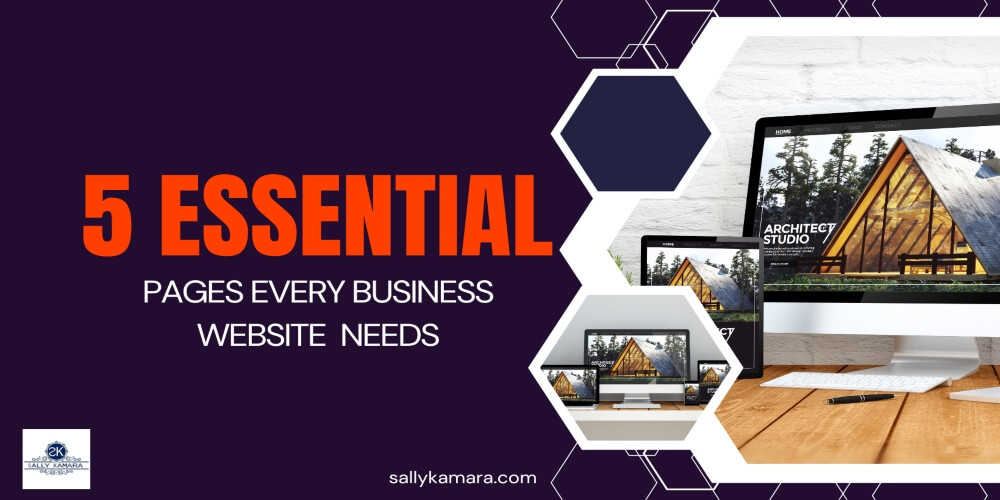5 Must-Have Pages for Your Small Business Website Needs (And What to Include in Each)
Introduction
As a small business owner or start-up founder, your website is often your first digital impression—and it needs to work for you 24/7. But many business websites fall short because they’re missing key pages that customers expect. If your goal is to turn visitors into customers, your website must be easy to navigate, build trust, and answer essential questions.
In this post, I’ll walk you through the five must-have pages every small business website needs, what to include on each, and tips for making them work harder for your brand.
1. Home Page – Your Digital Welcome Mat
Your homepage sets the tone for your entire website. It should clearly communicate who you are, what you offer, and how you can help.
What to include:
-
A clear headline that speaks directly to your audience’s problem
-
A short intro about your business or service
-
A featured image or banner with a call-to-action
-
Highlights of your services
-
Testimonials or trust signals
-
Easy navigation to other pages
Pro Tip: Use simple, friendly language and direct your visitor to one clear action — e.g., “Get a Quote” or “View Services.”
2. About Page – Build Connection & Trust
People want to know who they’re doing business with. Your About page is your chance to tell your story and share the heart behind your brand.
What to include:
-
Your story — how and why you started
-
Your values and what makes your business different
-
A professional photo (or team photo)
-
Your credentials or experience
-
A subtle call-to-action (e.g., “Let’s work together”)
Pro Tip: Write in first-person (“Hi, I’m Sally…”) for a more personal connection.
3. Services (or Products) Page – Show What You Offer
Whether you’re offering design services or handmade candles, this is the page where you outline what you sell — and why it matters.
What to include:
-
A list of your main services or products
-
Short descriptions with benefits, not just features
-
Packages or pricing (if appropriate)
-
Testimonials or case studies
-
Clear calls-to-action like “Book Now” or “Request a Quote”
Pro Tip: Use collapsible sections or visuals to make your offerings easy to scan.
4. Contact Page – Make It Easy to Reach You
Don’t make your visitors dig for your contact details. This page should be easy to find, simple, and friction-free.
What to include:
-
A short welcoming message
-
Contact form
-
Phone number and email
-
Business address (if relevant)
-
Links to social media or map
-
Business hours
Pro Tip: Embed a contact form and link your phone number so mobile users can tap to call.
5. Testimonials / Portfolio Page – Show Your Proof
Your happy customers are your best marketing tool. Show social proof through reviews or a visual portfolio of your work.
What to include:
-
Quotes or reviews from real clients
-
Before/after examples or screenshots
-
Case studies or success stories
-
Logos of businesses you’ve worked with
-
Optional: Video testimonials
Pro Tip: Update this page regularly as you complete new projects.
Conclusion: Your Website is Your Best Sales Tool
When these five pages are done right, they can help convert visitors into clients — even while you sleep. Focus on clarity, trust, and ease of use. If you’re missing one or more of these pages, now’s the time to improve your foundation.
📌 Need help building your website or refreshing the design?
📞 Call 07513600669 or email support@skdesignmedia.com to get started.





